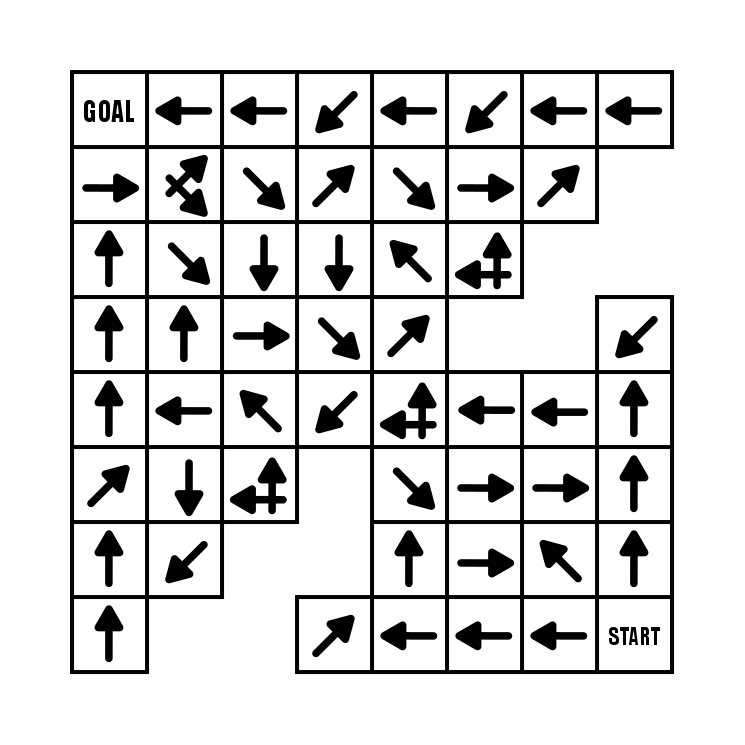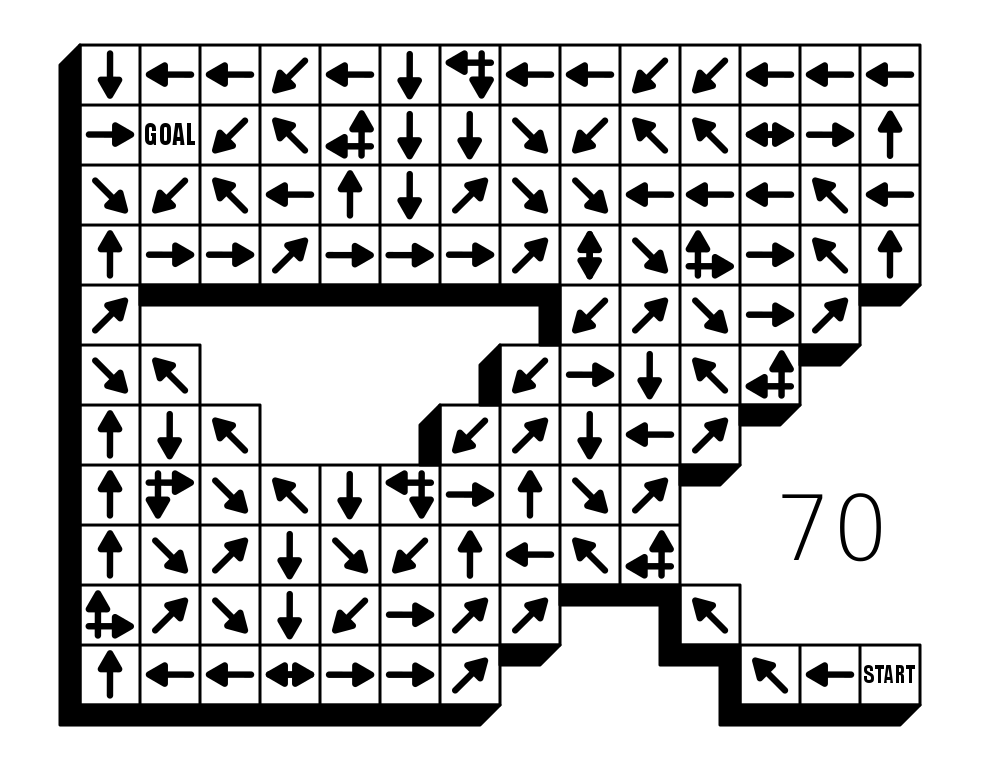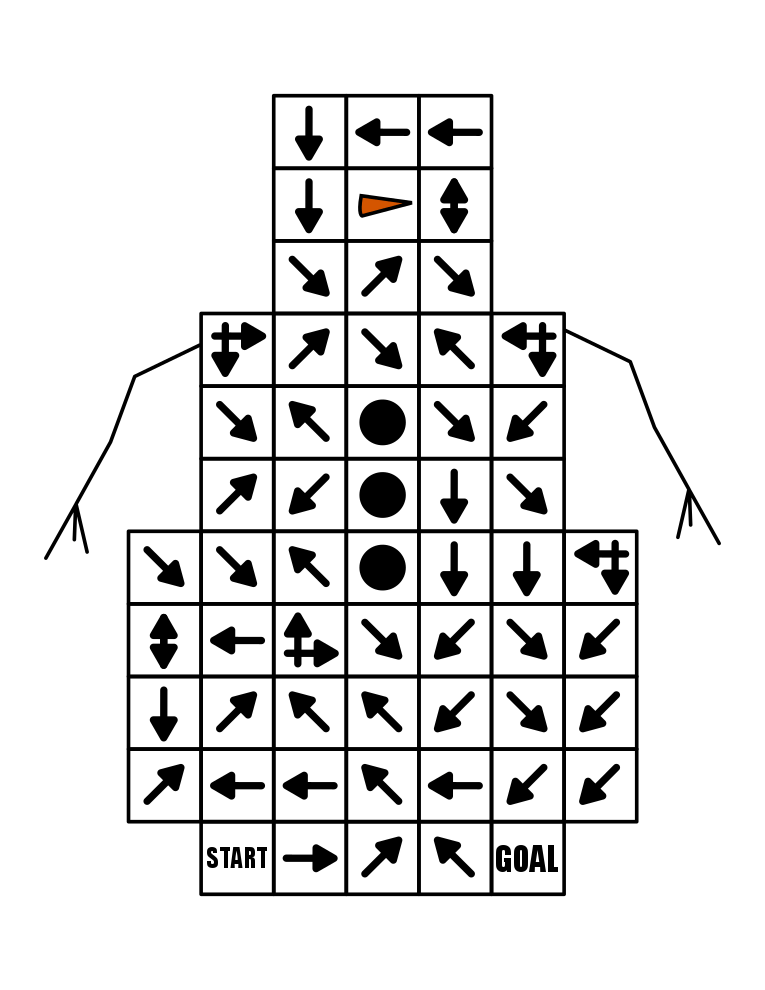Welcome to Part 2 of our Arrow Maze Design Case study. In this section of the case study we will look at the shape of the overall arrow maze. I call it using creative shapes, but it can just as easily be simple shapes.
Here is an overview of what we will be covering in the 14 part series:
Arrow Maze Construction and Design:
Arrow Maze Components:
Extreme Arrow Maze examples:
Arrow Maze Design Case Study - Part 2 - Using Creative Shapes
The shape and size of the Arrow Maze will help determine the difficulty level and funability which is apparently not a word. Well, I say it is.
Funability - a measure how much fun an event or item contains
Now that we have that out of the way let’s begin with some obvious statements.
The larger the Arrow Maze (as measured by the number of blocks) the more difficult the potential maze
Interesting shapes, including those with notches and gaps creates a more interesting solving experience and allows for more ‘visually hidden’ moves.
Let’s look at a few examples: Simple 9x9 maze (81 blocks). Nothing to write home about. The maze complexity in completely dependent on how the blocks are filled.
9x9 arrow maze
Here is a shape that is based off an 8x8 but has cutouts that give it a pinch point in the center. This means the loops do not return you to start, but return you to the midpoint intersection block. The shape essentially splits the maze into two sections.
Based off on an 8 x 9 grid, this maze has a cutout to give it an O shape. In this maze the flow of the pathways is counterclockwise around the center space.
My next example uses floating blocks that can only be reached by using double arrows. It also includes lots of gaps that can be jumped. Overall the shape helps make a more interesting solve. It includes a forced START move and a double move is needed to reach the GOAL.
I have made a few dozen 45 degree angle Arrow Mazes. This particular maze comes from my maze book (page 49!). While this maze looks interesting and is a nice change of pace from a regular shaped maze, the actual maze design is not really affected. Everything is at a 45 degree angle. I like to mix these in for a change of pace. The shape, however, does have many nocks and crannies to move in and out of !
And let’s look at 3 more shapes that are large scale landscape mazes that I made with interesting shapes to force certain moves. I like all three. Take some time to solve them, I think they are enjoyable mazes.
The moral of this portion of the case study - Be creative with your shapes !
Our next topic in Part 3 - Intersections









